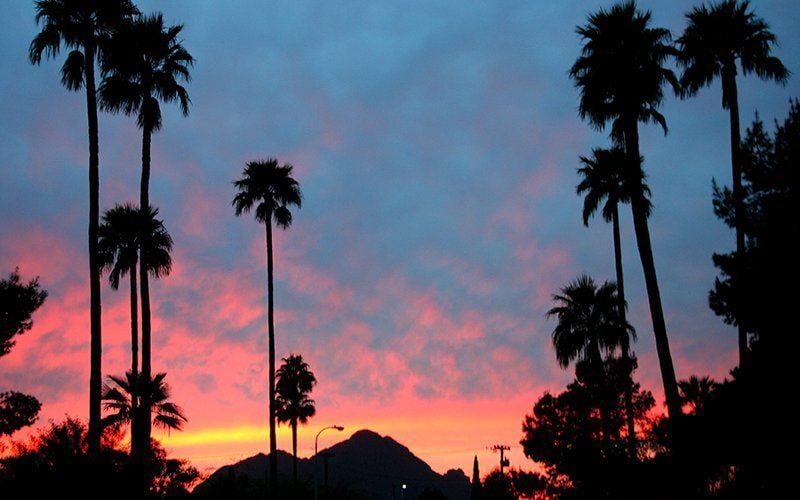PHOENIX — Hot summers are nothing new in Arizona, but humans aren’t the only ones who have suffered from record-breaking heat: queen palm trees across the valley have been burning up.
The National Weather Service says 2020 was the hottest year on record in Phoenix, with 48 days of excessive heat warnings and a heat peak in July and August.
Although palm trees have thrived in the arid Southwest for generations, some species are more resilient than others.
“The queen palm just doesn’t take the heat nearly as well as some of the other varieties,” said Bill Jones, an operations manager at Arcadia Color Garden Nursery in east Phoenix.
Queen palms are synonymous with warm regions and are popular landscape trees because of their long, glossy fronds. But the sustained heat and arid conditions of the Sonoran Desert are a challenge for the South American natives.
Signs of heat-damaged palms include wilted, weeping leaves with burned ends and brown marks along drying edges, Jones said. When all leaves are brown and the tree’s trunk is oozing, the tree’s in trouble, he said. Palm trees need a deep soaking of water twice a week to help recover.
Although more watering would seem to be the answer, that’s not always the case, said Debrah Thirkhill, program coordinator for Arizona State University’s Arboretum Services.
“We get a salt buildup in the soil because we’re high in calcium,” Thirkhill said. “Our water is hard water and that, when it comes through this long hot summer, there’s also a salt burn on the roots. … It’s just too much trauma for the plants at the end of a long hot summer.”





